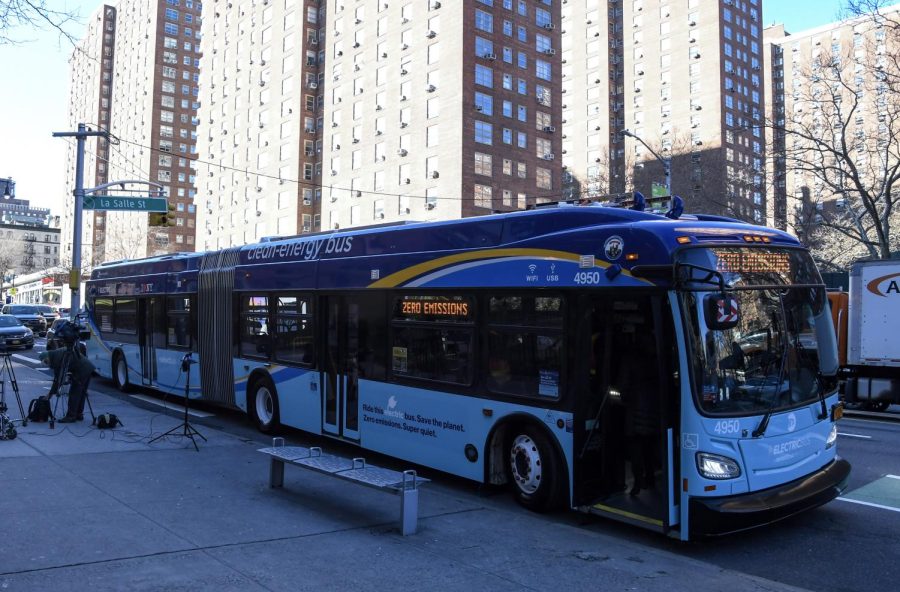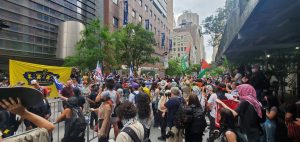Adams’ bus lane plan inconvenient for congested streets
February 25, 2022
New York City Mayor Eric Adams’ plan to add new bus lanes in an effort to improve transit efficiency threatens small business owners.
The daily ridership of buses surpassed the subway in 2020 during the height of the pandemic. The bus ridership jumped to 62% in April 2020, according to the New York Times. The subway had 444,000 passengers while buses had 505,000 daily ridership, predominantly low-income riders.
The New York City Department of Transportation released a five-year “New York City Streets Plan” right before former New York City Mayor Bill de Blasio was set to leave office. One of the benchmarks of this document was to build 150 miles of bus lanes by the end of 2026, creating the largest networks in the world.
One of Adams’ biggest blue-collar campaign promises included creating the 150 miles of new bus lanes. Now that he is mayor, he is set to speed up the buses by doubling the bus lanes around the city and through congested streets over the next four years.
Adams plans to prioritize bus service to underrepresented communities and low-income neighborhoods, but many local officials, business owners and community groups opposed this agenda, highlighting the worsening congestion of streets, reduced parking spots and possible gridlocks.
“There’s only 1.4 million people with cars, because we have the best transportation system on the globe,” Adams told the Daily News on the congested intersection of Caton and Coney Island Avenues. “We have to continue to invest in it and if we do that, people will rather not sit in traffic, like the traffic we see in here.”
Many criticized Adams for claiming that New York City’s transit system surpasses others worldwide.
Advocates agreed and said that he needs to improve transit quality, add more dedicated bus lane mileage and reduce car congestion with buses in narrow streets.
“Bus lanes work, but the traffic situation is deteriorating on the rest of the street network so much that it negates these gains we’ve seen from bus lanes,” Ben Fried, spokesman for TransitCenter, said.
Under pressure from advocates, Blasio installed five busways in the city that increased bus speed and ridership. Still, small business owners who were already struggling to gain customers saw it as a threat.
“Adding driving restrictions on Main Street, you will scare away those customers. You are really going to bankrupt those businesses,” Dian Song, executive director of the downtown Flushing Business Improvement District, told The New York Times.
TransitCenter enlisted several strategies for Adams to improve the quantity and the quality of bus lanes during his campaign: prioritize bus riders in the city budget, improve traffic and parking management for bus lanes in crowded streets and upgrade bus stop amenities and pedestrian connections.
“Queens residents have complained that a rush-hour bus lane on Fresh Pond Road in Ridgewood has made driving a nightmare,” The New York Times reported.
New bus lanes will surely speed up the buses and increase ridership, but it will also force cars out of these streets, resulting in increased gridlocks in congested New York streets and scarce parking spots utilized by small businesses.






